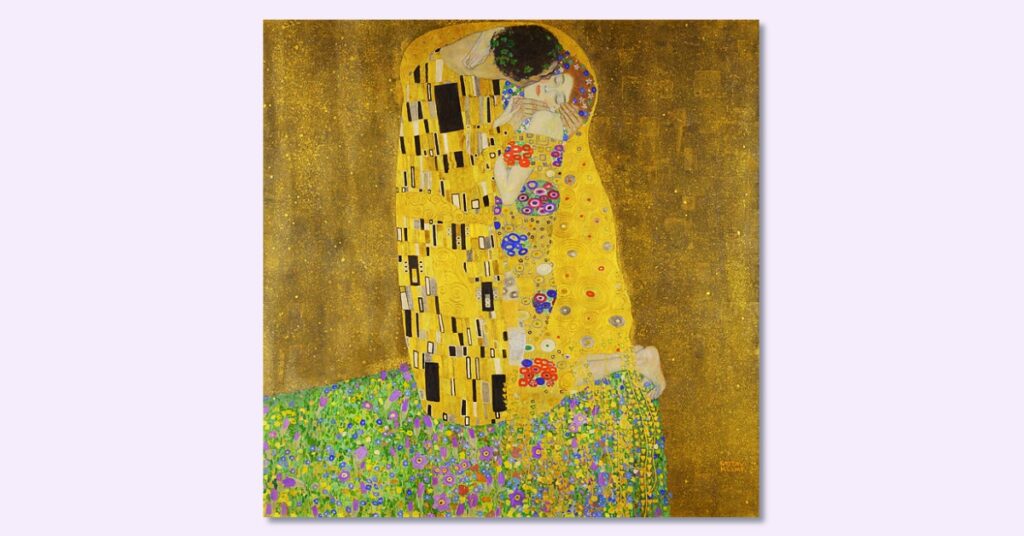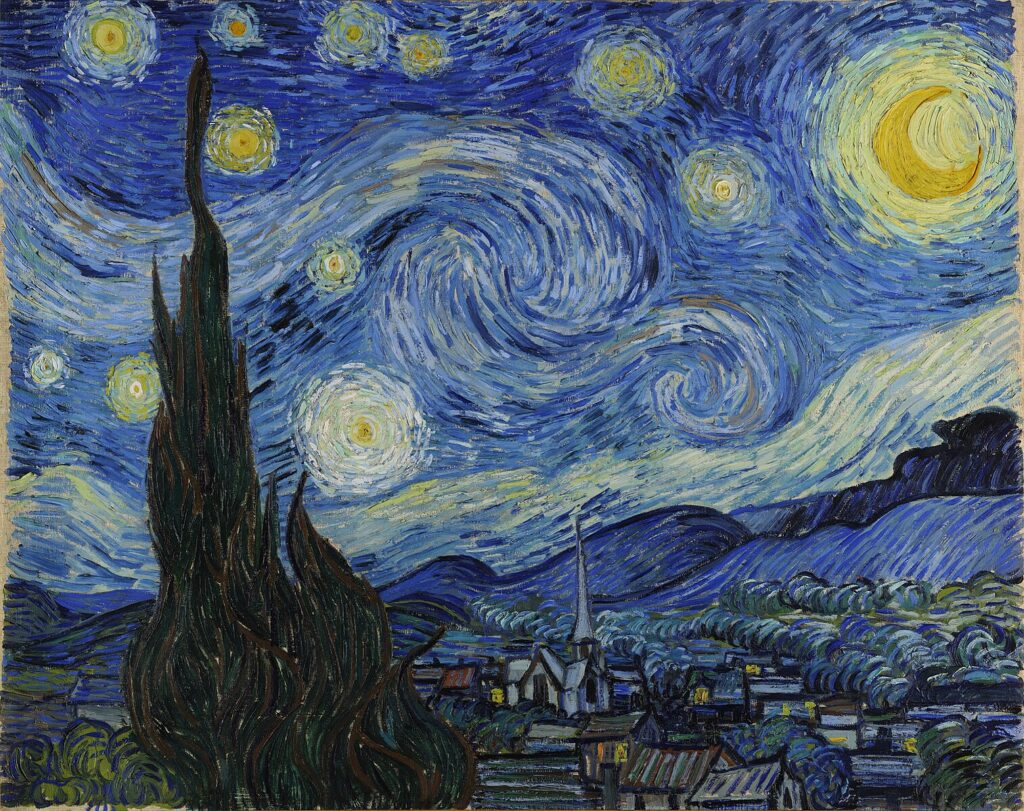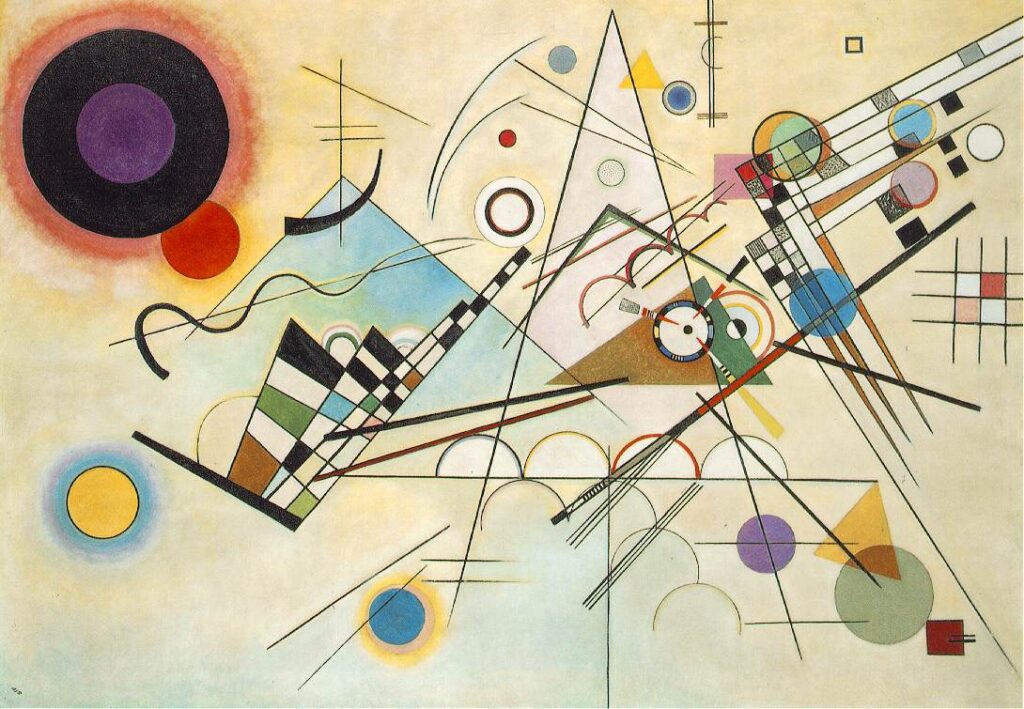The Modern Art movement, spanning the late 19th century through the 20th century, brought revolutionary changes to the art world. It challenged traditional artistic conventions, embracing innovation, experimentation, and the evolving spirit of the times. In this article, we will explore the Modern Art movement and its famous paintings. These artworks provide insights into the lives, influences, and creative processes of the artists who reshaped the artistic landscape.
What type of art was created during the Modern Art movement?
Paintings, installations, monuments, architecture and decor are some of the popular artworks of the Modern art movement.
Modern Art was created and popular during which years?
The Modern Art movement started in 1860 and was popular until 1975. However, the Modern Art movement is popular to this day.
Where was Modern Art made and popularised?
Modern Art started in Europe but eventually spread throughout the world, reaching America, India, Japan and other parts of the world.
What medium (media) and tools were used to make pieces of Modern Art?
Oil, gouache, inks, watercolours, mixed-media material, sculptures and installations are used to make Modern art pieces.
Who are some famous Modern Art artists and artworks?
Mickey by Damien Hirst

The Kiss by Gustav Klimt

Viva la Vida Watermelons by Frida Kahlo

Which art movement(s) came before the Modern Art movement?
Pointillism Art Movement came before the Modern art movement.
Which art movement(s) came after the Modern Art movement?
Post-modern and Contemporary art movements happened after the Modern art movement.
Top 9 Artworks of the Modern Art Movement
Les Demoiselles d’Avignon by Pablo Picasso

Pablo Picasso’s “Les Demoiselles d’Avignon” (1907) is a groundbreaking work that is often considered the precursor to the Cubist movement. The painting depicts five nude figures in a fragmented and abstract style, defying traditional depictions of the female form.
Picasso’s creation of “Les Demoiselles d’Avignon” was marked by extensive exploration and experimentation. He was influenced by African and Iberian art, and his interest in non-Western artistic traditions led to the fragmented and distorted figures in the painting. The title itself references the red-light district in Barcelona, reflecting Picasso’s engagement with the underbelly of society.
Starry Night by Vincent van Gogh

Vincent van Gogh’s “Starry Night” (1889) is one of his most famous and evocative works. The painting showcases a swirling night sky filled with stars, overlooking a tranquil village with a church steeple. The bold use of colour and swirling patterns reflect van Gogh’s inner turmoil and emotional intensity.
“Starry Night” was painted during one of the most tumultuous periods of van Gogh’s life, while he was a patient at the Saint-Paul-de-Mausole asylum in Saint-Rémy-de-Provence. Van Gogh’s mental health struggles and his fascination with the night sky converged in this masterpiece. This artwork can be considered a pioneering piece in both the Modern art movement as well as the Impressionist movement.
Guernica by Pablo Picasso

Pablo Picasso’s “Guernica” (1937) is a powerful anti-war painting that serves as a response to the bombing of the town of Guernica during the Spanish Civil War. The artwork is a harrowing depiction of the suffering and chaos wrought by war, featuring anguished figures and animals.
Picasso’s creation of “Guernica” was a deeply emotional and political act. He was commissioned to create a mural for the Spanish Pavilion of the 1937 International Exposition in Paris. The bombing of Guernica, which occurred while he was working on the painting, had a profound impact on his vision. This painting is considered both a Cubist and a Modern art piece.
Les Nymphéas by Claude Monet

Claude Monet’s “Les Nymphéas” (Water Lilies) series, painted from the late 19th century until his death in 1926, is a testament to his fascination with the play of light and colour on water. The series comprises numerous paintings of the water lilies in his garden at Giverny. Another versatile artwork that is both, an Impressionist and a Modern art piece.
Monet’s dedication to capturing the nuances of water and light is evident in the “Les Nymphéas” series. He created a water garden in his home in Giverny, where he meticulously arranged the lilies and observed their changing effects in different weather and lighting conditions. Monet’s commitment to studying the play of light on water made this series one of the most iconic in the history of art.
Black Square by Kazimir Malevich

Kazimir Malevich’s “Black Square” (1915) is a radical work that is often considered the epitome of Suprematism, Minimalism and even Modern art. The painting is a black square on a white background, embodying the idea that art should transcend representation and convey pure sensation and emotion.
Malevich’s “Black Square” marked a departure from traditional art forms and a commitment to pure abstraction. He believed that non-objective art could convey universal truths and spiritual experiences. Malevich’s stark and minimalist masterpiece remains an icon of avant-garde art.
Composition VIII by Wassily Kandinsky

Wassily Kandinsky’s “Composition VIII” (1923) is a striking example of his abstract and non-representational art. The painting features a dynamic interplay of geometric shapes, lines, and bold colours, reflecting Kandinsky’s belief in the use of abstraction to convey emotion and spirituality.
Kandinsky was deeply influenced by his interest in the “synthetic” relationship between art and music. He believed that art could evoke emotional and spiritual responses similar to music. “Composition VIII” is a synesthetic piece that converges the effects of sound and visuals.
Fountain by Marcel Duchamp

Marcel Duchamp’s “Fountain” (1917) is a ready-made artwork that consists of a urinal signed with the pseudonym “R. Mutt.” The artwork challenges traditional notions of art and the role of the artist.
Duchamp’s creation of “Fountain” was a provocative gesture, intended to challenge the conventional ideas of art and authorship. It was submitted to the Society of Independent Artists in New York but was met with controversy and rejection. Duchamp’s willingness to question the boundaries of art had a profound impact on the trajectory of modern art.
The Persistence of Memory by Salvador Dalí

Salvador Dalí’s “The Persistence of Memory” (1931) is both, a surrealistic and Modern art masterpiece that features melting clocks draped over various objects. The painting is a dreamlike and enigmatic exploration of the nature of time and reality.
Dalí’s artistic vision often drew from his dreams and his fascination with the surreal. “The Persistence of Memory” captures his interest in the fluidity of time and the unconscious mind. The melting watches, often seen as symbols of the relativity of time, have become iconic in Modern art.
No. 5, 1948 by Jackson Pollock

Jackson Pollock’s “No. 5, 1948” (1948) is a seminal work in Abstract Expressionism and Modern Art. The painting features intricate and chaotic drips, splatters, and layers of paint. It is often seen as an embodiment of the artist’s emotional intensity.
Pollock’s creation of “No. 5, 1948” was a visceral and physical act. He used the technique of dripping and pouring paint onto the canvas while it lay on the floor. This allowed him to engage with the painting in a dynamic and kinetic way, embodying the ethos of Abstract Expressionism.
The Modern Art movement ushered in a new era of artistic exploration and innovation. These accounts of famous paintings of the Modern Art movement offer insights into the lives, influences, and creative processes of the artists who redefined the boundaries of art. From the revolutionary ideas of Picasso and the emotional intensity of Van Gogh, these works continue to captivate and challenge art enthusiasts, serving as testaments to the enduring power and diversity of Modern Art.
*Images from Wiki Commons







0 Comments